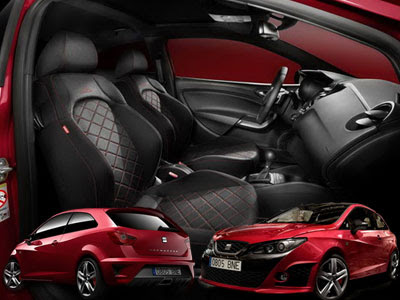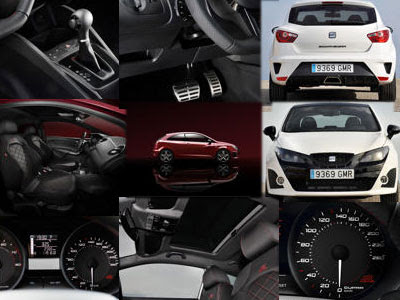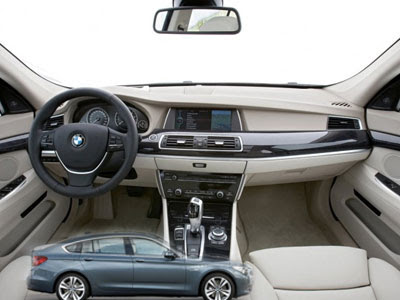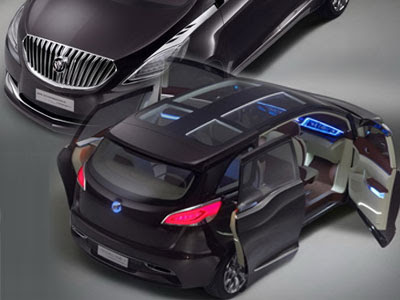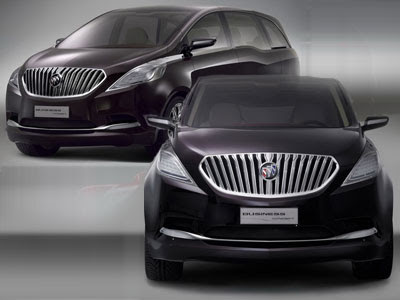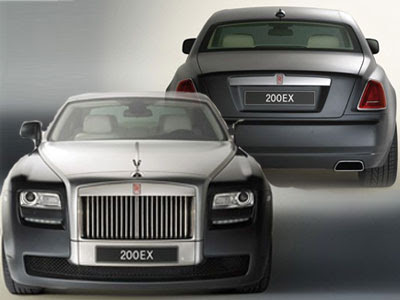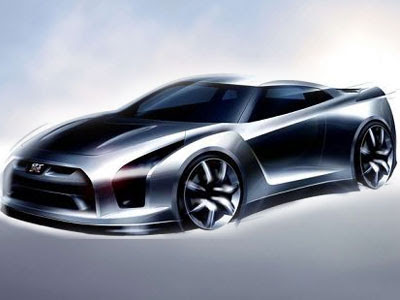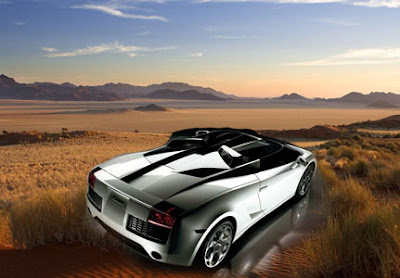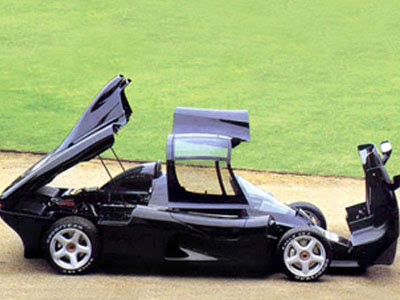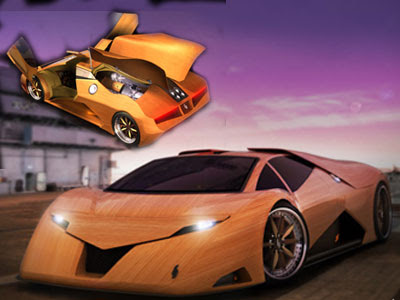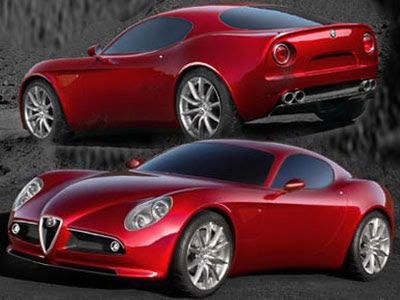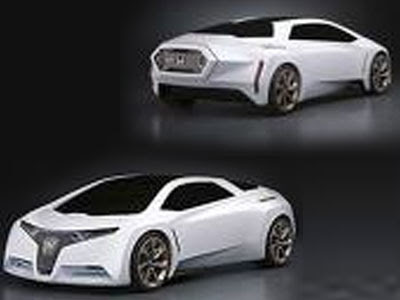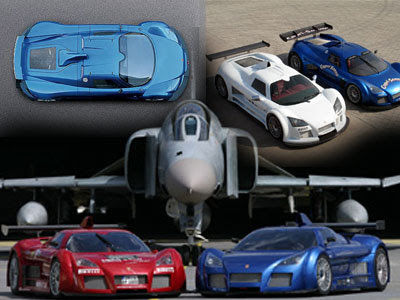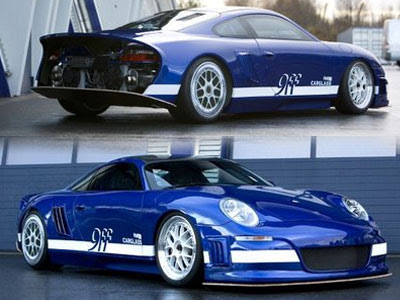Gumpert Apollo Super Sports Car.
The Apollo is the end result of a combining of skills between
Roland Gumpert - ex boss of
Audi Sport, Roland Mayer - owner of
MTM, and
Audi.The Gumpert Apollo is essentially a race car modified for the road.
Audi played somewhat of a back seat role in the Gumpert Apollo's production. Audi technology is available to the Apollo, however the car cannot directly rival existing Audi products, and Audi owns any subsequent patents from the Gumpert Apollo's development.
The Gumpert Apollo concept uses an Audi sourced
4.2 litre V8 (like the one used in the new
Audi R9 sports car) enhanced by twin turbochargers making a very respectable
650 horses, all this power runs through a six speed sequential transmission to the rear wheels, and the car is capable of reaching
60 mph in 3 seconds.The Gumpert Apollo is a two seat mid-engined race car which makes few concessions to be road legal.
Overall the car has a purposeful look,
Audi design influence creeps into the centre grille, other than this the concept is quite original, if somewhat rough. The front wheel arches hug the tires in a perfect circle before dissolving into the multiple vents down the sides. Noticeable race inspired design cues include the front lip air splitter and and roof mounted triangular air intake, no doubt necessary to feed
the hungry monster lurking below.
Below is the Gumpert Apollo press release.
Once the son of
the god of war Zeus, responsible for the victory and the template for
masculine beauty, he is now the namesake of the breathtakingly uncompromising super sports car that combines aesthetics and function like no other.
The Gumpert Apollo is the perfect synthesis of a road vehicle and track car. It evokes passion and driving pleasure beyond all expectations. With 650 bhp, 224 mph top speed and acceleration from 0 to 62 mph in just 3 seconds, you would have to go a long way to find an alternative to Apollo. The complete package is available in a cost-benefit ratio that cannot be matched in this exclusive vehicle class. As a
pure high-performance sports car with racing qualities that is also approved for use on the road, the Gumpert Apollo sets new standards.
Roland Gumpert, managing director and the driving force behind the company that builds the car, has created a manufacturing environment that combines engineering excellence with wideranging automotive and racing competence. Experts within the industry are all familliar with the name Gumpert. In the mid 1970s, the long-standing Audi manager was the driving force behind the development of the
vehicle "Iltis", the original predecessor of today's
"Quattro". In the years undere his management,
Audi won a total of 25
World Rally Championship races and was the 4-time winner of the
World Rally Championship.An Exceptional Design
The silhouette of the Gumpert Apollo, which has been optimized upon numerous times after tests in the wind tunnel, reflects its above-average performance capability. In its profile, the Apollo's dynamic appearance is further enhanced by its dimensions and its streamlined, long and wide shoulder lines. The mid-engine layout is emphasized by the cockpit, which is clearly situated toward the front of the vehicle, and the long wheel base; both factors ensuring optimum driving qualities. Massive air inlets and outlets in the front, and on the side in front of and behind the doors, leave no doubt about its potency. They supply the two turbochargers and the high-performance braking system with enough fresh air to ensure that the car maintains optimum operation for the duration of the race.
Driving Dynamics Redefined
The Gumpert Apollo's suspension was developed to ideally complement the clever aerodynamics of the car body, resulting in unusual driving dynamics. The Apollo is taut but not hard and offers the driver and passenger an extraordinary high level of comfort despite being purely designed for performance. It demands the complete attention of the pilot but does not overwhelm him thanks to its ultra-precise and predictable driving characteristics even at top speed. An ideal weight balance of 42 to 58 percent between the front and rear axis rounds it off.
Proven Performance in a New Dimension
The impressive power of the high-performance eight cylinder engine is based on the proven V8 aggregates from Audi. This engine in standard configuration is optimized for use in racing and road vehicles and produces 650 bhp as a biturbo engine. With a weight of only 430 lbs, it plays a major role in ensuring the Apollo has an ideal weight and its fascinating driving dynamics.
Via the two exhaust gas turbochargers, the combustion chambers are force-fed fresh air that has previously been cooled to the ideal temperature in large intercoolers.
The sequential six-speed transmission, that incorporates Formula 1 know-how, guarantees the efficient implementation of the energy generated.
Purism and Luxury in the Interior
Low weight was the top priority and has been achieved by using high-tech materials. For instance both the monocoque and the integrated instrument panel are made of carbon-fiber.
The seat position is individually set for every customer with padding, upholstery, adjustable pedals, and the steering column. The Gumpert Apollo is a made-to-measure sports car and in line with this principle, customers can design the interior to meet their preferences, be it pure performance or somewhat more luxurious.
The air conditioning system guarantees the perfect interior temperature while traveling. The high-end navigation system with DVD-player and sound system helps you get from A to B and delivers in-car-entertainment. The backward facing camera integral to the system helps the driver when reversing or, as Gumpert says, simply shows him how quickly the overtaken cars disappear from view.
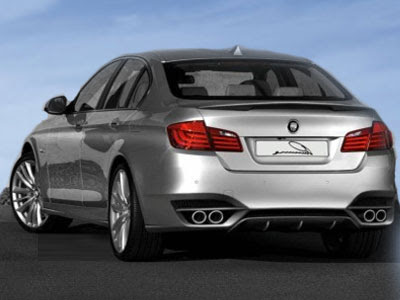 2011 BMW 5-Series F10 Sports Concept plans
2011 BMW 5-Series F10 Sports Concept plans 2011 BMW 5-Series F10 Sports Concept plans
2011 BMW 5-Series F10 Sports Concept plans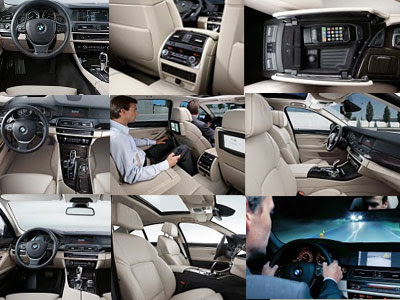 2011 BMW 5-Series F10 Sports Concept plans
2011 BMW 5-Series F10 Sports Concept plans 2011 BMW 5-Series F10 Sports Concept plans
2011 BMW 5-Series F10 Sports Concept plans



